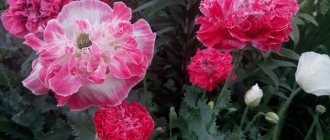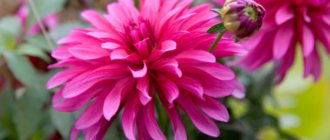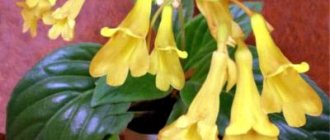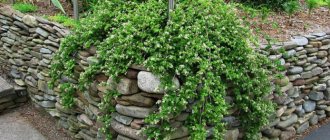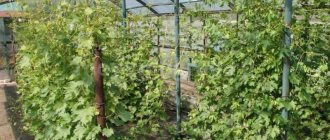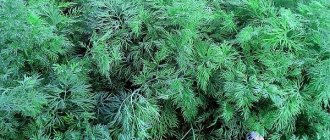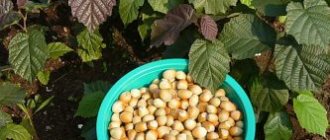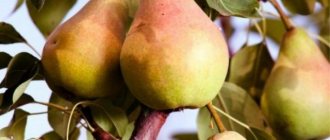Forget-me-not is a perennial flower that is grown as a biennial for the simple reason that in the third year it loses its decorative effect. However, the crop reproduces well by self-sowing, so you can plant it once and continue to admire self-seeding plants for many years. You can sow the seeds directly into open ground, or you can first grow seedlings. Growing forget-me-nots in 2021 from seeds at home allows you to get stronger plants, as well as see flowering in the first year after planting in the garden.
When to plant forget-me-not seedlings in 2021: optimal timing
The timing of sowing seeds for seedlings largely depends on when you want to see flowering! If you want to enjoy blooming forget-me-nots at the end of April or at the beginning of May, then you should sow them already at the end of October, in November. And if you want to see flowering in July-August, then you should sow at the standard time, approximately in March.
However, when planting early in October-November, it is necessary to constantly (in the morning and evening, and sometimes even during the day) illuminate the seedlings with phytolamps, otherwise the seedlings simply will not be able to grow and develop normally, they will stretch out and weaken.
When planting in spring, it is optimal to plant forget-me-not seedlings during March. Choosing a specific sowing day will help
Lunar calendar for growing forget-me-nots in 2021
Favorable days:
- in January: 1, 2, 10, 11, 15, 16, 19, 20, 27, 29;
- in February: 17, 18, 22, 23, 24;
- in March: 1, 3, 4, 20, 21, 29, 30;
- in April: 9, 10, 15, 16, 17.
Unfavorable days:
- in January: 12, 21, 22, 28;
- in February: 11, 27;
- in March: 12, 28;
- in April: 11, 26.
Types and varieties of forget-me-nots
The genus contains about 50 species. Only a few of them are used in ornamental gardening. Wild forget-me-nots are small-flowered, five-petaled, blue, with a yellow center. For example, the creeping forget-me-not, which is found in arctic-alpine regions. Cultivated ones are larger, there are white and pinkish shades.
Forget-me-not swamp
Forget-me-not is a low-growing, about 25 cm, perennial with a strongly branching tetrahedral stem and lanceolate leaves. It easily produces adventitious roots when lodging, so new ones quickly grow instead of faded shoots. This feature allows you to extend flowering until September. The curls with inflorescences are dense, the flowers are quite large. Popular varieties include Semperflorens with a bright blue color and Thuringen with dark, blue petals.
Alpine forget-me-not
Forget-me-not alpine (garden) is a hybrid bred on the basis of an alpine variety. The stems are densely branched, the rosette is dense. Flowering lasts 1.5 months. Reproduces only by seeds.
Many varieties have been developed that differ in color:
- Indigo Compacta is a blue perennial garden forget-me-not, the height of the bush is about 20 cm.
- Blue Ball is a bush about 15 cm, has bright blue petals.
- Victoria – distinguished by its rich blue color.
- Rosylva – up to 20 cm, pinkish flowers.
- Miro - dwarf, with light pale blue petals.
- Compinidf - 15 centimeter bush topped with dark blue inflorescences.
- Carmine King is a dark pink forget-me-not, about 20 cm tall.
Description and characteristics of the plant
Forget-me-not is a genus of annual and perennial plants belonging to the Borachnikov family. The distribution area of the flower in natural conditions is quite extensive. It can be found in abundance in regions of Asia and Europe with high humidity, and in southern Africa, North and South America, Australia, New Zealand and Russia.
Common features:
The plant is mainly ornamental. Mature bushes grow no higher than 35cm for the tallest varieties.
The entire height of the stem is covered with delicate green foliage and light down.
Depending on the variety, the leaves may differ slightly in shape.
The petals of the flowers are mainly blue, pink and white.
The size of the inflorescences is not large, but they literally dot the bushes.
Growing forget-me-not seedlings from seeds
Growing forget-me-nots from seeds is the most common method of propagating garden forget-me-nots. You can grow forget-me-nots either through seedlings or using the seedless method. At the same time, forget-me-nots are mainly grown from seeds. They are most often grown as a biennial plant. Prepared seeds must be dipped in slightly salted water. The floating planting material should be thrown away; most likely, it will not be able to germinate. The remaining seeds must be dried. Like all biennials, forget-me-not seeds are sown in May-June on seed beds or in bowls with loose, fertile soil. Seeds are sown superficially on a compacted, moist, flat soil surface and only lightly sprinkled with light soil or sand. The crops are covered with spunbond, polyethylene or glass, and the soil is kept moist by carefully watering from a spray bottle or over a non-woven covering material. The first seedlings appear literally after five to six days. After germination, the crops are freed from shelter.
When two true leaves form (usually after 3-4 weeks), the forget-me-nots are pulled out or planted in pots (1-3 plants) or on growing beds at a distance of 5-7 cm between plants. To keep the bushes compact, forget-me-not seedlings are grown in partial shade. The seedlings are periodically watered, the soil is loosened, and weeds are removed. For better tillering, seedlings are pinched. Forget-me-nots are fed with complex mineral soluble fertilizer for seedlings once every two weeks. Gradually the concentration of fertilizer is increased. In late August - early September, forget-me-nots form a dense rosette of leaves. In this form, they are planted in a permanent place according to the scheme recommended for the variety (15-25 cm between plants) and watered well
Growing and care
The plant is classified as both annual and perennial. Basically, they are grown for only 2 years. In the 3rd and 4th seasons, the flowers do not look so attractive, and their color fades significantly.
The soil
Soil is important for good flowering and growth. Moderately moist soil with sufficient fertilizer is best. But you should not choose very nutritious soil, because then the plant will grow actively, but will not bloom.
Watering
Although forget-me-nots love moisture, you should not water them too often. In the month of May, the plant practically does not need water, because there is already enough of it in the soil.
Fertilizers
Fertilizing should be done three times a season. The first is on the 14th day after planting. The plant is just starting to grow and needs additional care. Liquid mineral fertilizers are best suited. The second time it is worth applying organic fertilizers in September. In spring, the soil needs humus and peat.
In order for a sufficient amount of nutrients to reach the roots, the soil should be constantly loosened. The advantage of this plant is that weeding is not required for growth, since weeds cannot break through due to the well-developed root system.
Forget-me-nots need not be covered for the winter. They tolerate cold well.
Caring for forget-me-nots in the open ground
If you choose the right planting site, caring for garden forget-me-nots is not difficult. And yet, in order to prolong flowering and prevent the development of diseases, you need to know about some of the features of its agricultural technology.
Watering the plant and applying fertilizers
Like all moisture-loving plants, forget-me-nots bloom only with a sufficient level of humidity. In early spring, when the soil is sufficiently wet after winter and it rains periodically, it is enough to water the plantings once a week. At the end of May, the frequency is increased to 2-3 times a week. With a lack of moisture, the flowering period is significantly reduced.
The area is not watered with a stream or irrigation method: in the first case, the soil is washed out from under the roots, the plant “falls” and dies. In the second, moisture gets on the leaves, which can provoke the development of fungal diseases. It is better to prepare grooves in advance to evenly distribute moisture over the area, or simply lay the hose on the ground, moving it periodically.
Many gardeners are confident that forget-me-nots grow without additional fertilizing. In fact, it responds to fertilizers, like all beautifully flowering plants, with more abundant and longer flowering. This is especially true for hybrid varieties that can produce buds repeatedly.
Forget-me-not is not fed with mixtures with a high nitrogen content - the compost added when digging is enough for it. Otherwise, the bushes will begin to “fatten” and form side shoots instead of buds. This does not mean that you need to look for fertilizers “completely without nitrogen” - they are mostly complex; choose those that are dominated by phosphorus and potassium. On the eve of flowering, superphosphate is added in the dosage specified by the manufacturer. When replanting buds, repeat the procedure, adding potassium salt. After flowering, wintering bushes are fertilized with it again.
Autumn care and preparation for winter
If forget-me-nots are grown as biennials, after flowering they are simply removed from the flowerbed. Perennial cultivation is suitable only for some varieties, for example, garden forget-me-not.
In this case, the usual set of measures is carried out:
- Remove flower stalks and shorten leaves.
- They loosen the ground around the bushes and cover them with peat, straw or fallen leaves.
- Cover the mulch with branches to prevent it from being blown away by the wind.
Without shelter, the plant, except in the southern regions, freezes in winter. They take off the “fur coat” as soon as the snow melts.
Variety of species
There are about 50 wild species of this flower. Here are the most common ones:
- Alpine forget-me-not (Myosotis alpestris) - found in the Alps, Carpathians, and Caucasus. The stems are low, from 5 to 15 cm, the rhizome is short. The leaves are gray-green. The flowers are dark blue. It blooms for a long time, about seven weeks. This is one of the few types of forget-me-nots that love sunlight.
- Forest forget-me-not (Myosotis sylvatica) is a perennial plant that loves moisture and shade. Grows in the Carpathians, in Europe. It reaches a height of 30 cm. The leaves are elongated oval in shape, the color is soft green. The flowers are light blue. It also blooms for a long time.
- Forget-me-not (Myosotis palustris) is a perennial plant. The stems are branched, the leaves are very large, up to 8 cm in length. Blooms all summer (May-September). The flowers are pink or blue. It grows on the banks of swamps, rivers, and lakes, as it loves moist soil. Found in Siberia, Transcaucasia, Mongolia, Central Europe and the Balkans.
- Forget-me-not (Myosotis arvensis) - used as a medicinal plant. The shoots are low, the flowers are blue, small in size (up to 0.5 cm in diameter). It blooms for a long time, from May until late autumn. It grows in the vast expanses of Siberia, Asia, North Africa and the Canary Islands.
- Forget-me-not Chekanovsky (Myosotis czekanowski) - this type of forget-me-not is included in the Red Book of Russia. It is found exclusively in the Olenek-Lena interfluve and on the left bank of the Talagan River (Kharaulakh Mountains), as well as in the north of the Verkhoyansk Range. It is quite difficult to find even to take a photo.
- Rehsteiner's forget-me-not (Vyosotis Rehsteineri) is one of the species that spreads along the ground, forming a soft blue carpet in the clearing. Blooms in April and May. Refers to perennial plants that require virtually no care.
What you need to know about plant care
Caring for the flowers described in this article has a number of features:
- Myosotis is a frost-resistant plant that loves shade.
- Flowers prefer moist meadow, clay or sandy-clay soil, that is, plants need to be watered once every three weeks. Try not to overdo it; overwatering can cause the forget-me-not to wither.
- There is no need to weed the soil. This component of care can only harm the plant.
- The soil should be fertilized at least once a month (with organic and mineral fertilizers, you can prepare a mixture: 1 teaspoon of urea, potassium sulfate and nitrophoska, diluted in 10 liters of water).
- To prolong the flowering of the plant, do not overwater the flowers, but provide them with access to indirect sunlight. Then the flowers will become brighter and more saturated.
- The main enemy of forget-me-nots, the beauty of which is visible even in the photo, is aphids, which can be fought in one of the many ways that we talked about here.
- The above flowers tolerate transplants very easily, quickly adapting to a new place.
If the necessary conditions are not met (lack or excess of moisture, abundant sunlight), the roots of the forget-me-not can rot, the leaves dry out and the flowers fade.
Methods for propagating forget-me-nots
Forget-me-nots are becoming increasingly popular among gardeners and are appearing in flower beds more and more often. Different methods of flower propagation are used, which we will talk about. When to sow forget-me-not seeds? The best time to plant this wonderful flower with seeds is July, since the soil is already warm enough, and there is another month for the seed to adapt and take root. Before planting, mix the soil with humus, moisten it a little, make shallow holes and sprinkle forget-me-not seeds into the open ground. The seeds need to be sprinkled with a little sand on top, covered with film, which must be removed after 2 weeks. For the first 2 weeks after sowing, you cannot remove the film or water the seeds. They should “ban”, then the plants will take root better.
Cuttings
The most popular propagation method when working with forget-me-nots. For cuttings, you need to choose a well-grown bush and cut off the tallest cuttings just below the shoot. The cutting must be placed in water until it takes root. Then it is planted in the ground. To do this, make shallow holes in prepared soil (moistened, fertilized with peat and humus), plant plants in them, sprinkle a little dry soil on top, and water at the root. After 5 days you need to apply fertilizer. It is better to take a universal one, making sure that it does not contain an ammonia component.
Reproduction of forget-me-nots by dividing bushes
Reproduction by dividing a bush is not as complicated a process as it seems. The root of the flower is very flexible, and can be separated with one movement of the pruning shears. You need to carefully shake off the soil from the root of the plant, select a part of the rhizome with a “knee” (bend), and cut it vertically. For better engraftment, the roots can be dipped in a solution of universal fertilizer. Then the bushes are planted like ordinary seedlings. After dividing the bushes, next year, the seeds will disperse on their own, and there will be much more bushes, which should not be allowed. It is necessary to thin out the bushes, because if the forget-me-not is planted too densely, this will lead to the color being less abundant and bright. Garden forget-me-not growing from seeds
Diseases and pests of forget-me-nots
Aphids appear on the underside of leaves. Karbofos (2 g per 10 sq.m) or other methods of combating aphids will help get rid of it. Cutworms, flea beetles and slugs may also appear. A powdery white coating indicates the presence of powdery mildew. It appears when planted tightly or in excessively dry soil. If the disease has overcome the plant, use fungicides and insecticides to combat it. To speed up growth, you can fertilize flowers with compost, peat or nitrogen.
